Your shopping cart is empty!
Categories
-
- - Amplifier Module
- - Arduino Compatible - Development Platform
- - Arduino Compatible Modules & Shields
- - Breakout Boards
- - Cables / Hookup wires
- - Displays
- - Enclosures
- - Magnets
- - Motors & Gears
- - Nuts & Bolts
- - Peltier Cooler Heater
- - PIR
- - Sensors
- - Servo's & Motors
- - Solar
- - Stand Alone Modules
- - Stepper Motor & Drivers
- - USB Programmers & Converters
- - Voltage Regulator & Chargers
- - RC Hobby Parts
-
- - AC DC Cooling Fans
- - Cable Ties
- - Day/Night Switches
- - Electrical Plugs & Connectors
- - Gate Remotes & Receivers (Universal)
- - Heat Shrink Sleeves
- - Insulation Tape
- - Lighting & Globes
- - Mains Power Cables
- - Power Supplies & AC/DC Adaptors
- - Security Lights LED Type
- - Solar Charge Controllers
- - Surge Protectors
- - Timers
-
- - Battery Holders
- - Breadboard
- - Bridge Rectifier
- - Buzzers
- - Capacitors
- - Crystals
- - Diodes
- - Electromechanical
- - Fuses
- - Headers
- - Heat Sinks
- - IC Sockets HQ
- - IC Sockets TIN
- - IC's --> Semiconductor
- - Inductors
- - Laser Units (CD Players)
- - Microcontrollers & CPU's
- - Opto Electronics
- - Panel Meters And Displays
- - Passive Components
- - Pilot Lamps & Fittings
- - Plugs & Sockets
- - Resistors
- - Rotary Potentiometer
- - Semiconductors
- - Sensors
- - Switches
- - Transformers
- - TVS Diodes
- - Veroboard / Stripboard
- - Voltage Regulators
- - Zener Diode
Plugs & Sockets
Some uses of jack plugs....
- Headphone and earphone jacks on a wide range of equipment. 6.35mm (1/4 in) plugs are common on home and professional component equipment, while 3.5mm plugs are nearly universal for portable audio equipment. 2.5mm plugs are not as common, but are used on communication equipment such as cordless phones, mobile phones, and two-way radios.
- Consumer electronics devices such as digital cameras, camcorders, and portable DVD players use 3.5mm connectors for composite video and audio output. Typically, a TRS connection is used for mono unbalanced audio plus video, and a TRRS connection for stereo unbalanced audio plus video. Cables designed for this use are often terminated with RCA connectors on the other end.
- Hands-free sets and headsets often use 3.5mm or 2.5mm connectors. Phone connectors are used for mono audio out and an unbalanced microphone (with a shared ground). Four-conductor TRRS phone connectors are used to add an additional audio channel such as microphone input added to stereo output.
- Microphone inputs on tape and cassette recorders, sometimes with remote control switching on the ring, on early, monaural cassette recorders mostly a dual-pin version consisting of a 3.5mm TS for the microphone and a 2.5mm TS for remote control which switches the recorder's power supply.
- Patching points (insert points) on a wide range of equipment.
- Personal computers, sometimes using a sound card plugged into the computer.
The most common arrangement remains to have the male plug on the cable and the female socket mounted in a piece of equipment: the original intention of the design
RJ45 Back to Back Coupler Network
..
R29.90
Ex Vat: R26.00
Ex Vat: R26.00
RJ45 Network Male Plug & Boot
..
R4.50
Ex Vat: R3.91
Ex Vat: R3.91
RJ45 Network Male Plug Connector excl boot
..
R2.50
Ex Vat: R2.17
Ex Vat: R2.17
RJ9 Telephone Handset Plug
..
R2.50
Ex Vat: R2.17
Ex Vat: R2.17
The SIM card connector comprises a body having an accommodating space for disposing a SIM card and m..
R50.00
Ex Vat: R43.48
Ex Vat: R43.48
SPEAKON 4 PIN F/MALE SOCK INLINE
..
R62.50
Ex Vat: R54.35
Ex Vat: R54.35
Speakon 4 Pin Female Chassis Mount Socket Square
Speakon panel mount connectors are the..
R35.00
Ex Vat: R30.43
Ex Vat: R30.43
SPEAKON 4 Pin Female Socket C/M
..
R46.30
Ex Vat: R40.26
Ex Vat: R40.26
Speakon 4 Pin Male Speaker Plug
..
R62.50
Ex Vat: R54.35
Ex Vat: R54.35
Surge Protection Mains & Telephone Plug
1 x Mains Socket
2 x Telephone Sockets
Surge..
R230.00
Ex Vat: R200.00
Ex Vat: R200.00
Terminal PCB Combicon 6 Block Female Right Angle
..
R11.00
Ex Vat: R9.56
Ex Vat: R9.56
Termination Box Single CAT5e
..
R50.34
Ex Vat: R43.77
Ex Vat: R43.77
Termination Box Single CAT6
..
R50.34
Ex Vat: R43.77
Ex Vat: R43.77
USB A Standard Female Plug Right Angle 4 Pin PCB Mount
USB A connector which must be used on devi..
R5.00
Ex Vat: R4.35
Ex Vat: R4.35
USB A Standard Female Plug Verical 4 Pin PCB Mount
USB A connector which must be used on devices ..
R5.00
Ex Vat: R4.35
Ex Vat: R4.35
USB A Standard Male Plug 4 Pin
..
R5.00
Ex Vat: R4.35
Ex Vat: R4.35
USB B connectors are used on devices which receive power like most peripheral devices.
&nbs..
R4.00
Ex Vat: R3.48
Ex Vat: R3.48
XLR 3 Pin Male Inline Plug
The XLR connector is a style of electrical connector, primarily found ..
R35.00
Ex Vat: R30.43
Ex Vat: R30.43
XLR 3-Pin Female "Cannon" Type Plug Socket Inline
The female XLR connectors are designed to..
R50.00
Ex Vat: R43.48
Ex Vat: R43.48
Featured
Specials



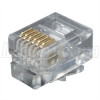
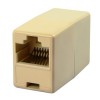
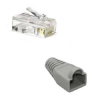
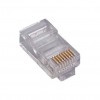
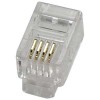
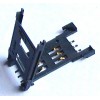
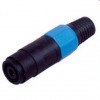
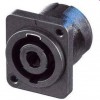

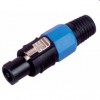
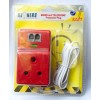
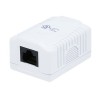
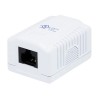
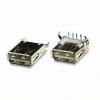
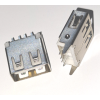
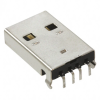
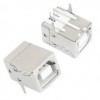
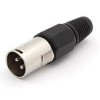
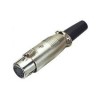




-80x80.jpg)















